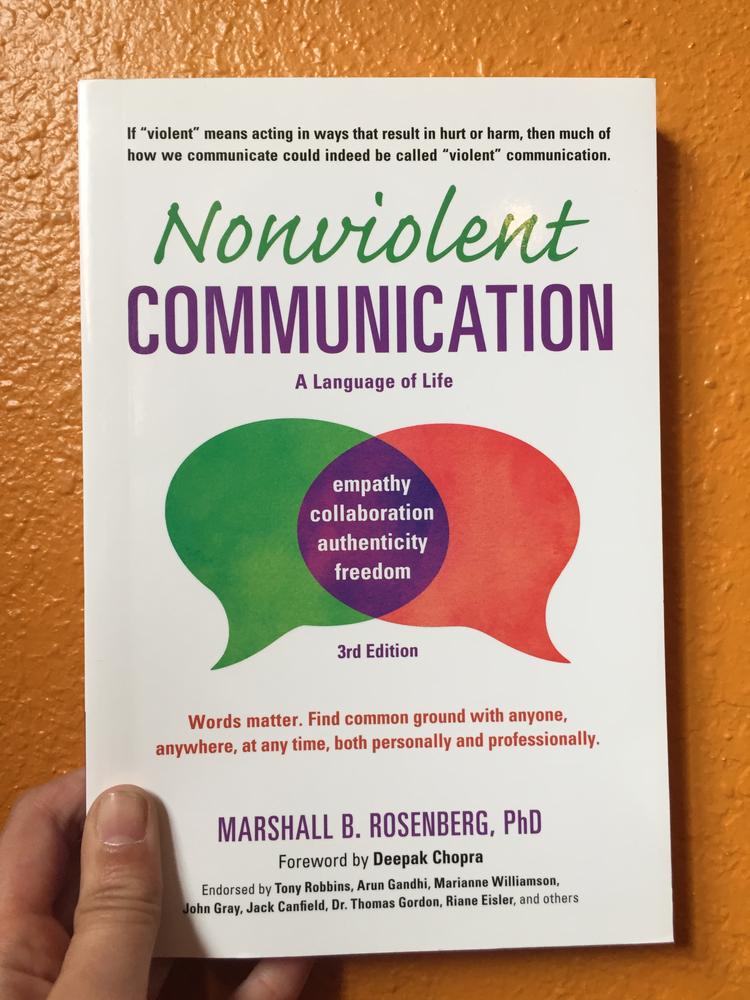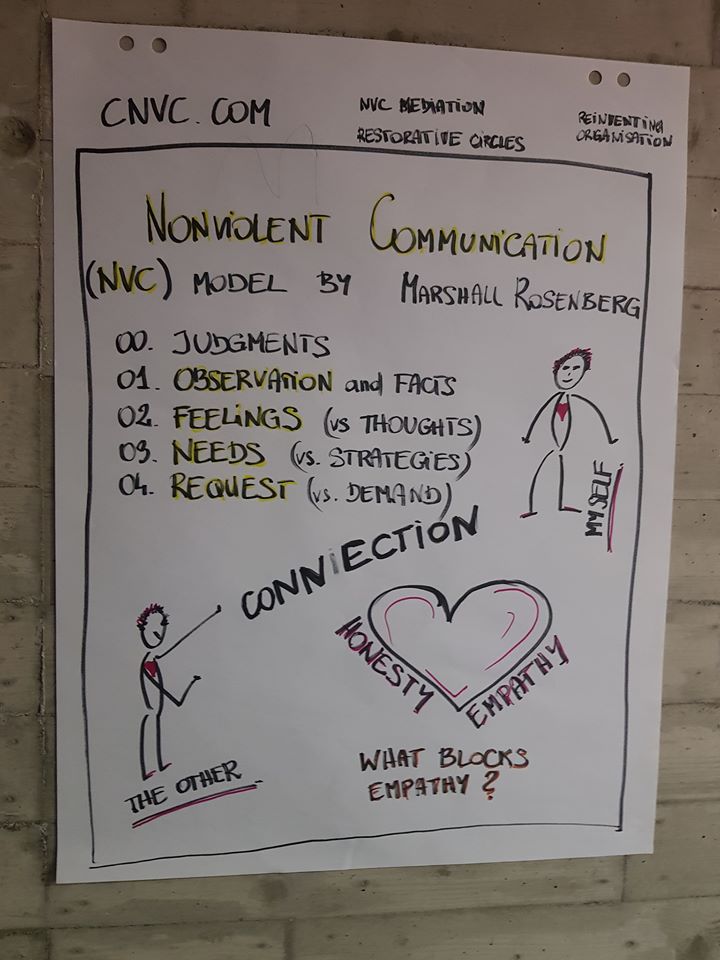STEPS:
The model itself consists of 4 (5) steps:
0.Acknowledging judgments – as a natural tendency for humans. We may accept that and try to leave the judgments beside to move to the next step.
1.Observation and facts (vs judgments) – when we leave the point of evaluation and the attitude to “know what is good and what is bad for me”, we can notice the simple facts, which all the sides of the communication process can agree on. Free from interpretation, facts create a common background.
2.Feelings (vs thoughts) – they serve as a signal that our needs are met or unmet, and push to reflect on what it is that I need in that specific moment. You may find the list of feelings and evaluative words confused with feelings in the useful resources section.
3.Needs (vs strategies) – looking at the needs, and asking people around, we may realise that most of them are universal, and the most fundamental for humans are the needs to be noticed and appreciated. It means that just noticing that the other person is going through some feelings and asking what they need, already creates a connection. Thus, what separates us are not the needs but the strategies we choose, consciously or not, to meet them. The strategies may be in conflict, while we might discover that we are actually fighting to meet the same need. You may find the list of needs in the useful resources section.
4.Requests (vs demands) – positive, supporting concrete actions or connection, can be asked to another person as well as to yourself. A request is done with an attitude that “no” is a possible answer and is still accepted.
Here follows an example of how those steps could be transferred into a full statement, taking the responsibility first for myself as the closest person with whom I am in a relation:
When I see that______________
I feel ______________
because my need for ________________ is/ not met.
Would you be willing to __________________?



